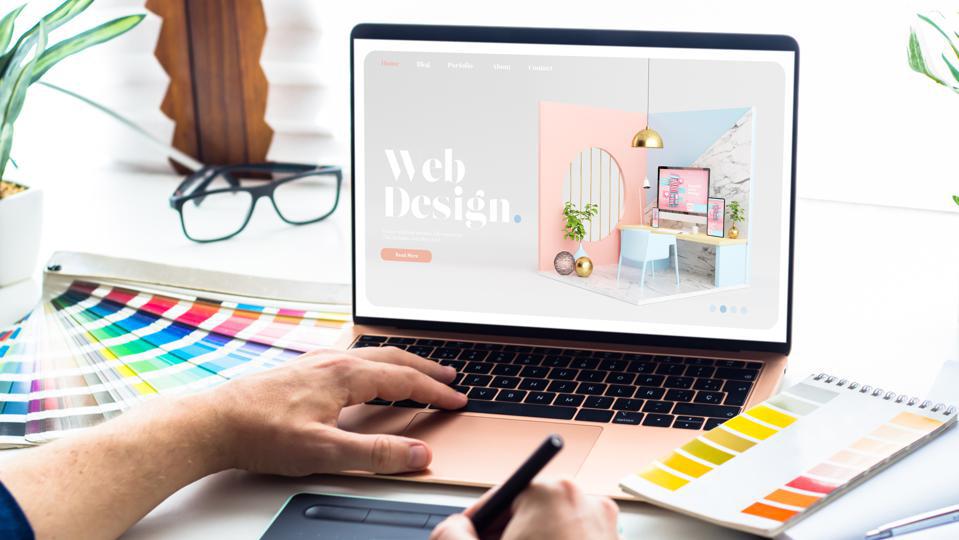Unveiling the Art and Science Website Design: A Deep Dive into the World of Website Designers

Unveiling the Art and Science Website Design: A Deep Dive into the World of Website Designers
In our digital age, website serves as the virtual face of an individual, business, or organization. It's often the first point contact between you and your audience. In this context, the role of website designer becomes paramount. Website designers are creative and technical architects behind the visually appealing and user-friendly websites that capture our attention.
The Evolution of Website Design
Before we delve into the role website designers, it's essential to appreciate the evolution of website design itself. In the early days of internet, websites were primarily text-based, with basic HTML providing the structure. However, as technology advanced, did the expectations web users. Modern websites now incorporate a myriad of design elements, interactive features, responsive layouts.
The Role of a Website Designer
A website designer, often referred as a web designer, is a professional responsible for creating the visual aspects and user experience of website. They are the architects who shape the look, feel, and functionality of a website. Here are some key aspects of their role:
Visual Design: Website designers focus creating visually appealing layouts that align with the brand or concept of website. They work with color palettes, typography, images, other design elements to craft a cohesive and aesthetically pleasing web presence.
User Experience (UX) Design: Ensuring a positive user experience is paramount. Designers consider the user's journey through the site, aiming make it intuitive and user-friendly. This involves creating clear navigation, intuitive menus, responsive designs that adapt to various devices screen sizes.
Content Presentation: Designers determine how content should be presented on website. This includes the arrangement of text, images, videos, and other media elements to engage visitors convey information effectively.
Responsive Design: With proliferation of smartphones and tablets, responsive design is a critical aspect of modern web design. Designers ensure that websites function seamlessly on all devices screen sizes.
Accessibility: Website designers also consider accessibility, ensuring that website is usable by individuals with disabilities. This involves incorporating features such as alt text images providing keyboard navigation options.
Performance Optimization: They work on optimizing website performance by minimizing page load times, which crucial for user satisfaction search engine rankings.
Coding Skills: While website designers primarily focus on visual user experience aspects, many also possess coding skills. They may use HTML, CSS, and JavaScript implement their designs or collaborate closely with web developers bring their concepts to life.
The Importance of Website Design
Website design plays pivotal role in the success of a website its impact on visitors. Here's why it matters:
First Impressions: Your website is often the first interaction potential visitors have with your brand. well-designed website creates positive first impression encourages users to explore further.
Credibility: A professionally designed website instills trust and credibility. Users are more likely engage with trust website that looks polished reliable.
User Engagement: Effective design keeps users engaged and encourages them stay longer, explore your content, take desired actions, such making a purchase or contacting you.
SEO Impact: Search engines like Google take website design into account when ranking pages. User experience factors, such as mobile-friendliness page speed, are crucial for SEO success.
Branding: Website design allows you convey your brand identity effectively. Consistent branding across your website reinforces your brand's message and values.
Competitive Advantage: In crowded online marketplace, well-designed website can set you apart from competitors. It can be key differentiator that attracts retains customers.
Skills and Tools of Website Designer
Website designers need diverse skill set and access to various tools to excel in their profession. Some essential skills and tools include:
Skills:
Graphic Design: Proficiency in graphic design software like Adobe Photoshop or Illustrator is often requirement. This skill is crucial for creating visual assets, such logos and images.
UI/UX Design: Understanding user interface user experience principles is vital for creating websites that are both visually appealing and easy to navigate.
Coding: Familiarity with HTML CSS is beneficial designers who want to implement their designs directly. JavaScript knowledge can also be valuable creating interactive elements.
Responsive Design: Knowledge responsive design principles ensures that websites look and function well on all devices.
Communication: Effective communication skills are necessary for collaborating with clients, developers, other team members.
Tools:
Design Software: Adobe Creative Cloud suite, including Photoshop, Illustrator, and XD, are popular design tools. Sketch Figma are also widely used for UI/UX design.
Prototyping Tools: Tools like InVision Adobe XD allow designers to create interactive prototypes for testing and feedback.
Coding Tools: Text editors like Visual Studio Code are essential coding and testing website designs.
Content Management Systems (CMS): Familiarity with popular CMS platforms like WordPress, Drupal, Joomla can be advantageous.
Project Management Tools: Tools like Trello Asana help designers stay organized and collaborate effectively with teams.
Website designers are the artists architects of the digital world, shaping the online experiences we encounter daily. Their creative vision, technical skills, and attention user experience are instrumental in creating websites that captivate and engage visitors. In a digital landscape where first impressions matter, website design remains an indispensable element of online success. As the internet continues evolve, the role website designers will only become more critical in ensuring that our online interactions are seamless, visually stunning, and user-centric.